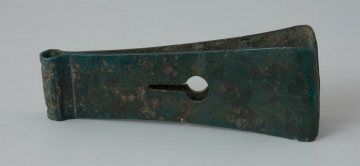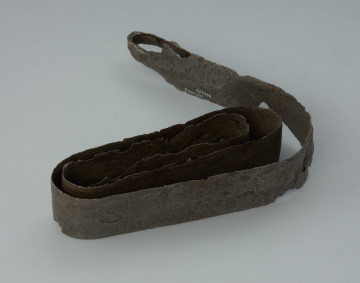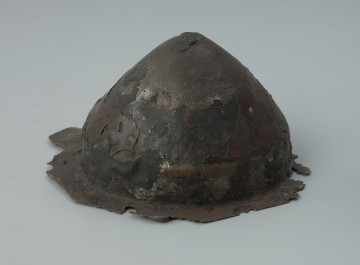
Tiny pliers
National Museum in Szczecin
Part of the collection: Antiquity
The clay cup of the Oksywie culture is distinguished by its artistic craftsmanship. It has a smooth, black surface, typical for the pottery of the Oksywie culture. The maker intentionally added a small amount of crushed stone to the pottery mixture, which stabilized the firing process. The vessel is decorated with a decorative band consisting of metopes, a filled herringbone pattern, triangles filled with punctures and shallow engraved lines. These metopes are not symmetrically distributed, which is also a characteristic feature of the pottery from the Oksywie culture. According to the archival sources, the cup comes from burial site no. 46 discovered in the burial cemetery in Konikowo, Koszalin district. This burial also contained a second ceramic vessel. The cup is dated to the late pre-Roman period (2nd - 1st centuries BC). The cemetery in Konikowo was discovered by chance in 1911. The excavation of the necropolis was conducted by a local regionalist and amateur archaeologist, pastor Georg Magdalinski. He published the results of his work in 1934, along with materials from cemeteries in Jeżyce and Mierzym, near Koszalin, that he had excavated. In total, 64 burials were discovered in Konikowo, at least half of which were surrounded by stone.
Bartłomiej Rogalski
Author / creator
Dimensions
cały obiekt: height: 13 cm
Object type
furnishings and equipment; container; vessel (container); funerary vessel
Technique
firing in redox atmosphere
Material
clay
Creation / finding place
Owner
Muzeum Narodowe w Szczecinie
Identification number
Location / status

National Museum in Szczecin

National Museum in Szczecin

National Museum in Szczecin
DISCOVER this TOPIC
Museum of King Jan III's Palace at Wilanów
DISCOVER this PATH
Educational path